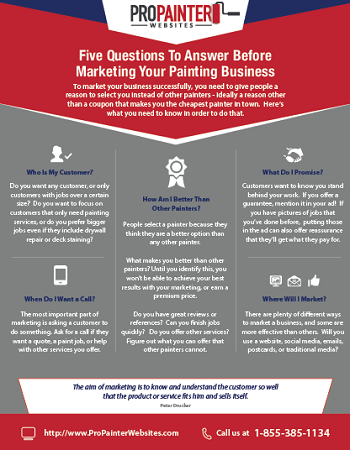Understand How Seasonal Conditions Affect The Success Of Industrial External Paint And Discover The Perfect Periods To Ensure Long-Lasting Results For Your Job
Understand How Seasonal Conditions Affect The Success Of Industrial External Paint And Discover The Perfect Periods To Ensure Long-Lasting Results For Your Job
Blog Article
Personnel Author-Fox Rodriquez
When you're planning a commercial external painting task, seasonal factors can make or damage your results. You'll want to consider just how temperature and humidity impact paint application and drying out times. Selecting the ideal period can ensure your paint adheres effectively and lasts longer. Yet which periods are really the most effective for this sort of work? Let's check out the key elements that can impact your project's success.
The Impact of Temperature on Paint Application
When you're planning a business external paint task, the temperature can substantially impact just how well the paint adheres and dries.
Ideally, you intend to repaint when temperature levels range in between 50 ° F and 85 ° F. If it's as well chilly, the paint might not treat effectively, causing concerns like peeling or splitting.
On the other side, if it's also warm, the paint can dry also swiftly, preventing appropriate attachment and leading to an uneven surface.
You ought to additionally think about the time of day; morning or late afternoon offers cooler temperature levels, which can be more beneficial.
Constantly check the maker's suggestions for the details paint you're using, as they commonly give guidance on the suitable temperature level variety for ideal results.
Humidity and Its Effect on Drying Times
Temperature level isn't the only ecological factor that affects your industrial exterior paint project; humidity plays a significant role as well. click the up coming website can reduce drying out times drastically, influencing the general quality of your paint work.
When the air is saturated with moisture, the paint takes longer to cure, which can bring about problems like bad attachment and a higher threat of mildew growth. If you're painting on a particularly moist day, be prepared for prolonged wait times in between coats.
It's important to monitor local weather conditions and plan accordingly. Preferably, aim for humidity levels between 40% and 70% for ideal drying.
Keeping these factors in mind ensures your job remains on track and provides a long-term finish.
Best Seasons for Commercial Exterior Paint Projects
What's the most effective time of year for your business external painting jobs?
Spring and early autumn are normally your best bets. During these seasons, temperature levels are light, and humidity degrees are commonly reduced, developing suitable conditions for paint application and drying out.
Avoid summertime's intense heat, which can create paint to completely dry also swiftly, resulting in inadequate attachment and coating. In a similar way, winter season's cold temperature levels can impede appropriate drying and curing, taking the chance of the longevity of your paint work.
Go for days with temperatures in between 50 ° F and 85 ° F for ideal outcomes. Remember to examine the neighborhood weather prediction for rain, as wet conditions can destroy your task.
should i paint the ceiling the same color as the walls around these variables guarantees your paint project runs efficiently and lasts longer.
Conclusion
In conclusion, planning your business exterior paint projects around seasonal factors to consider can make a significant difference in the end result. By organizing work during the suitable temperature levels and moisture degrees, you'll make sure far better adhesion and drying times. Keep in mind to watch on neighborhood weather prediction and select the correct time of year-- springtime and very early autumn are your best bets. Taking these actions will certainly help you achieve a sturdy and specialist finish that lasts.
